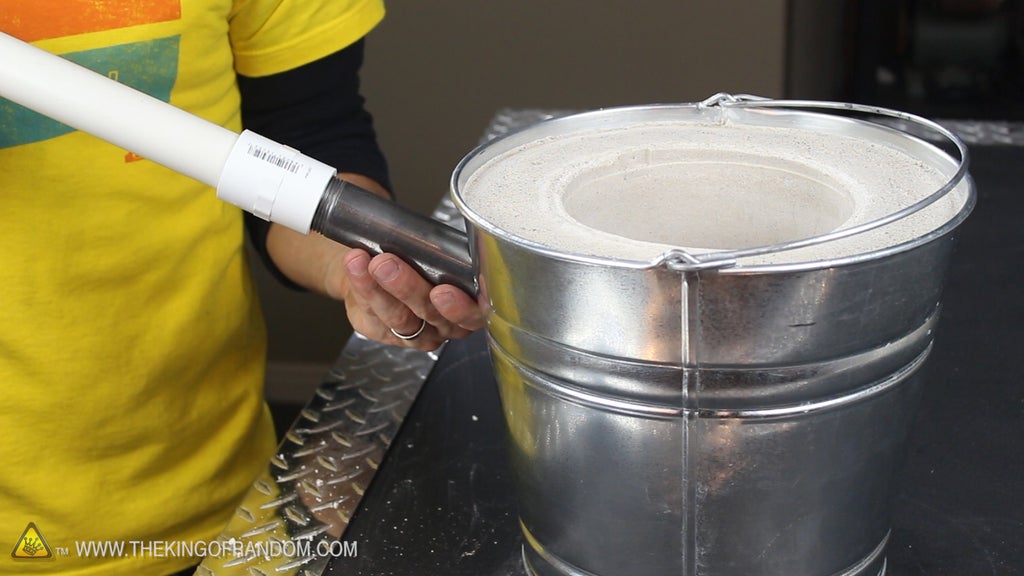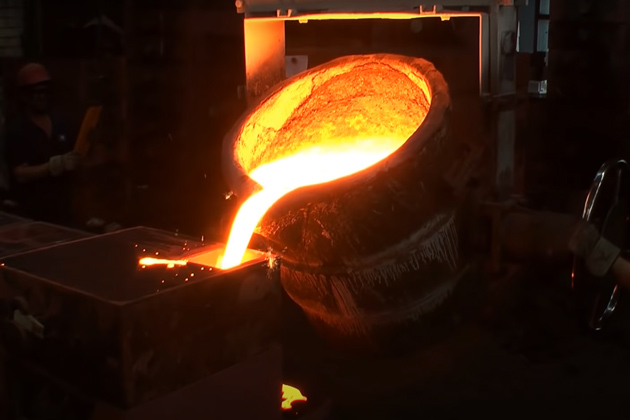Leading processes that define successful Metal Casting results
Discover the Cutting-edge Techniques Used in a Metal Foundry for Superior Casting Results
In today's affordable manufacturing landscape, metal foundries are increasingly embracing cutting-edge techniques to enhance casting results - Metal Foundry. Advanced computer simulations permit exact modeling of molten metal behavior, while 3D printing allows fast production of complicated mold and mildews. Furthermore, environment-friendly materials and automation improve procedures. These growths assure significant renovations in performance and quality assurance. The influence of these innovations on sustainability and production methods continues to be to be totally discovered.
Advanced Computer System Simulations in Metal Casting
Advanced computer simulations have actually reinvented the metal spreading procedure by boosting accuracy and efficiency. These advanced devices enable designers to create digital designs of cast parts, allowing them to predict the behavior and evaluate of liquified metal throughout the casting stage. By mimicing numerous parameters such as temperature, flow rate, and air conditioning rates, manufacturers can identify potential flaws prior to physical manufacturing begins.
This aggressive strategy reduces waste and reduces expensive mistakes, ultimately leading to boosted product top quality. In addition, simulations assist in the optimization of mold and mildew designs, making sure that they satisfy the certain requirements of each project. The combination of computational liquid dynamics (CFD) and finite element analysis (FEA) more adds to the accuracy of these simulations, offering insights that were previously unattainable. Therefore, advanced computer system simulations have come to be a crucial component of contemporary metal foundries, significantly progressing the industry's capabilities.
3D Printing for Mold And Mildews and Patterns
3D printing has actually emerged as a groundbreaking method for creating mold and mildews and patterns in the metal foundry market. This technology allows the quick manufacturing of complex geometries that typical manufacturing approaches struggle to accomplish. By making use of additive production, foundries can develop intricate layouts with decreased preparations and material waste. The capability to generate mold and mildews as needed permits higher versatility in style versions, assisting in faster prototyping and modifications.
Additionally, 3D printing can make use of a variety of products, including steels and plastics, tailored to certain casting demands. This versatility enhances the accuracy of molds, leading to superior casting results with improved surface finishes. Additionally, the reduction in the number of parts needed simplifies assembly procedures, even more enhancing production effectiveness. As foundries remain to adopt 3D printing, they are positioned to redefine market requirements, leading the way for innovation and enhanced productivity in metal spreading procedures.
Eco-Friendly Products and Processes
As the metal foundry industry encounters enhancing pressure to reduce its ecological impact, the fostering of green materials and procedures has come to be necessary. Factories are currently exploring sustainable choices to standard products, such as utilizing recycled steels and bio-based binders. These materials not only reduce waste however also reduced energy usage during manufacturing.
Furthermore, advancements in sand spreading techniques have caused the usage of artificial sands that are less dangerous to the atmosphere. Foundries are likewise carrying out ingenious processes like liquified metal therapy that lowers emissions and boosts the high quality of actors items.
Moreover, water-based layers have replaced poisonous solvents, advertising a more secure work atmosphere (Metal Casting). By integrating these green techniques, metal foundries can noticeably reduce their eco-friendly influence while keeping premium spreading outcomes. This shift not just benefits the environment yet also lines up with the growing consumer demand for lasting manufacturing solutions
Automation and Robotics in Foundry Procedures
While the metal foundry sector embraces advancement, the integration of automation and robotics is transforming operations significantly. Automated systems simplify procedures such as mold making, metal pouring, and casting completing, substantially boosting performance. Robotics help with the handling of heavy materials, minimizing click this the threat of workplace injuries and ensuring much safer atmospheres.

Further, using automated assisted cars (AGVs) maximizes product transport within facilities, making sure prompt delivery of parts to appropriate workstations. By executing these modern technologies, foundries can adjust to rising and fall demands with greater dexterity, ultimately bring about improved success and competitiveness in the market. As automation and robotics remain to evolve, they hold the prospective to redefine standard foundry practices and drive more developments in casting techniques.
Real-Time Monitoring and Quality Assurance Techniques
The improvements in automation and robotics have actually led the way for a lot more advanced strategies to quality control in metal foundries. Real-time tracking systems utilize advanced sensors and data analytics to track crucial criteria throughout the spreading procedure. These systems continuously analyze variables such as temperature level, stress, and product composition, enabling prompt detection of discrepancies from developed criteria.
Quality control techniques currently incorporate device knowing formulas that examine historical information to anticipate potential issues prior to they additional reading happen. This positive approach reduces waste and enhances general production effectiveness. In addition, integrated feedback loopholes enable rapid adjustments, ensuring that each casting fulfills rigid quality demands.
The implementation of digital twins-- virtual reproductions of physical assets-- has also revolutionized top quality assurance, permitting engineers to imitate and optimize procedures in real-time. Together, these ingenious techniques substantially improve the integrity and quality of spreadings, setting brand-new market standards in metal foundry operations.
Regularly Asked Questions
What Sorts of Metals Are Typically Cast in Shops?
Commonly cast metals in foundries consist of aluminum, iron, bronze, and brass. Each metal shows unique buildings, making them appropriate for various applications, such as automotive parts, machinery, and creative sculptures, enhancing their adaptability in manufacturing.

Exactly how Lengthy Does the Casting Refine Usually Take?
The casting process commonly takes a number of hours to days, depending on elements such as the intricacy of the mold, type of metal used, and air conditioning demands. Each phase influences the total period considerably.
What Precaution Remain In Location for Foundry Employees?

Exactly how Are Issues in Castings Identified and Addressed?
Flaws in castings are determined through visual inspections and non-destructive testing approaches. When spotted, foundry employees resolve them by improving procedures, readjusting material make-ups, and carrying out corrective measures to ensure high quality and compliance with criteria.
What Is the Expense Array for Metal Casting Solutions?
The cost variety for metal spreading solutions commonly differs in between $1 to $10 per pound, depending on factors such as material kind, complexity of the style, and production volume, affecting general rates substantially.
In today's affordable production landscape, metal foundries are progressively adopting cutting-edge methods to boost spreading outcomes. As the metal foundry industry encounters enhancing pressure to decrease its environmental impact, the adoption of environmentally friendly materials and processes has actually ended up being important. Shops are currently discovering sustainable alternatives to traditional products, such as making use of bio-based binders and recycled steels. By integrating these environmentally friendly methods, metal foundries can noticeably lower their eco-friendly impact while preserving top notch casting results. The improvements in automation and robotics have actually led the means for more sophisticated techniques to top quality guarantee in metal foundries.